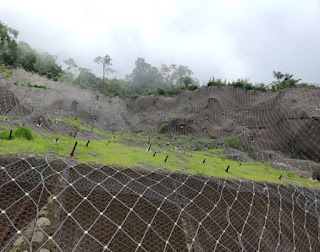Rockfalls represent a significant natural hazard in mountainous and steep terrains worldwide. These geological occurrences involve the detachment and rapid downward movement of rock from a cliff or slope. Understanding the mechanics behind rockfalls and assessing the risks they pose is crucial for implementing effective rockfall protection measures. This knowledge not only helps in safeguarding human lives but also protects infrastructure and minimizes economic losses.
The Mechanics of Rockfall
Rockfall events are primarily governed by the physical properties of the rock, the geomorphology of the slope, and external triggering factors. Rocks can detach from slopes due to various reasons, including weathering processes, water infiltration that leads to freeze-thaw cycles, root growth, or direct human activities such as construction. Once a rock detaches, gravity takes over, causing the rock to fall, roll, bounce, or slide down the slope.
The trajectory of a falling rock is influenced by its initial position, the slope's geometry, the rock's size and shape, and the physical properties of both the rock and the slope material. The energy and speed of rockfall can be significant, posing serious threats to anything in their downward path.
Risk Factors Associated with Rockfalls
1. Geological and Environmental Conditions: Certain geological conditions, such as the presence of fault lines, poorly consolidated rock materials, and steep slopes, significantly increase the likelihood of rockfalls. Environmental conditions such as heavy rainfall, earthquakes, and rapid temperature changes can also trigger rockfalls.
2. Human Impact: Areas that undergo extensive human activity, like mining, construction, and road building, are particularly susceptible to rockfalls. These activities can destabilize previously stable slopes and lead to increased rockfall incidents.
3. Seasonal and Weather-Related Factors: In many regions, rockfalls are more common in specific seasons due to climatic conditions. For example, in cold regions, the freeze-thaw cycle in spring can increase rockfall activity, as water seeps into cracks, freezes, and expands, breaking the rock apart.
Assessing Rockfall Risks
Assessing rockfall risks involves identifying potential rockfall sources and hazard zones, understanding the frequency and magnitude of potential falls, and evaluating the vulnerabilities of exposed elements, such as roads, buildings, and human populations. Techniques used in risk assessment include geological mapping, remote sensing, and rockfall trajectory modeling, which help in predicting the path and dispersion of falling rocks.
Rockfall Protection Measures
To mitigate the risks associated with rockfalls, various protection measures can be implemented:
1. Passive Protection: This includes measures that do not actively stop the rocks but protect the area from the impact. Examples include rockfall catchment fences, barriers, and protective sheds for roads or railways. These structures are designed to withstand the impact of falling rocks and are strategically placed based on rockfall risk assessments.
2. Active Protection: Active protection involves measures that stabilize the rock face to prevent detachment. Techniques such as rock bolting, meshing, and the use of concrete or shotcrete are common. Vegetation can also play a role in stabilization, where deep-rooting plants help bind the soil and prevent erosion.
3. Early Warning Systems: Technological advancements have enabled the development of early warning systems that detect the precursors to rockfalls, such as increased rock movement or acoustic emissions from cracking rocks. These systems can alert nearby communities and traffic systems to imminent danger.
Conclusion
Effective rockfall protection is based on a thorough understanding of rockfall mechanics and risks. By integrating geological knowledge with engineering practices, it is possible to design and implement safety measures that significantly reduce the risk posed by rockfalls. As development expands into more geologically unstable areas, the importance of rockfall protection continues to grow, highlighting the need for ongoing research and investment in this critical field.

Comments
Post a Comment